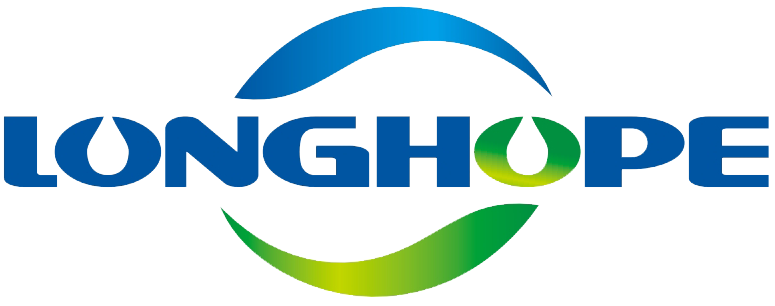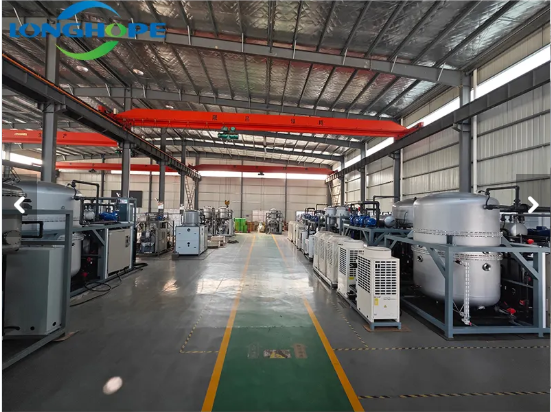Key Considerations for Industrial Waste Treatment Plant Design
Site Selection and Proximity to Critical Zones
Choosing the right site for an industrial waste treatment plant is crucial to minimize environmental and community impact. A well-selected location that is distant from communities, water bodies, and ecosystems can help prevent environmental degradation and potential community objections. Additionally, being close to transportation networks, such as roadways, railways, and water transport, is beneficial as it facilitates the efficient movement of both incoming waste and outgoing treated water. This proximity can lead to reduced operational costs and improved logistical efficiency. Moreover, understanding and adhering to zoning laws and land-use regulations are essential to ensure compliance and to avoid legal complications during plant operations.
Analyzing Wastewater Characteristics and Flow Rates
A thorough understanding of the wastewater's chemical and physical properties is vital for designing effective treatment processes. This analysis allows for selecting the appropriate technologies that will effectively remove contaminants. Additionally, measuring flow rates accurately is crucial to design the plant with sufficient capacity to handle peak flows, thus preventing system overloads during periods of heavy usage. It's also important to consider seasonal variations and potential spikes in wastewater production. This foresight enables the design of scalable solutions that can adapt to dynamic needs, ensuring consistent and reliable plant performance.
Soil Conditions and Flood Risk Assessment
Conducting geotechnical surveys is necessary to evaluate soil stability and drainage capabilities, which are fundamental to preventing structural issues that could affect the plant. Furthermore, flood risk assessments should be carried out by studying historical flooding data and utilizing hydrological models to forecast potential impacts on plant operations. Such assessments are critical to ensuring uninterrupted operations and protecting equipment from flood damage. Incorporating design features such as elevated facilities and flood barriers can significantly mitigate risks associated with flooding events, thereby safeguarding the plant's infrastructure and ensuring long-term operational resilience.
Optimizing Layout and Equipment for Maximum Efficiency
Space Allocation for Treatment Stages and Maintenance
Creating an efficient layout is imperative to the functional and financial success of an industrial waste treatment plant. A compact design can lead to significant reductions in construction costs and enhance operational efficiency by streamlining workflow and maintenance access. Having proper spacing between equipment is also critical. It minimizes the risk of contamination and ensures safe access during maintenance activities. This strategic arrangement not only benefits workflow but also prolongs the lifespan of the equipment, maintaining its performance.
Selecting Equipment Based on Contaminant Removal Needs
Choosing the right equipment hinges on a detailed understanding of the contaminants present in the wastewater. The selection process involves analyzing chemical properties and considering modular equipment for flexible design. This adaptability allows for plant expansion and upgrading, ensuring continued efficiency. Additionally, conducting thorough supplier assessments is crucial. Choosing suppliers with reliable, technologically advanced Products can enhance overall operational performance, adapting to future regulatory or processing needs seamlessly.
Noise Control and Aesthetic Integration
Effectively managing noise through sound barriers and equipment enclosures is essential for maintaining good relationships with nearby communities. Implementing these noise reduction measures will help minimize disturbances and enhance the plant's overall integration with its surroundings. Aesthetic integration, involving thoughtful landscape design and building architecture, can further improve public perception and acceptance. Regular community engagement should also be prioritized to address any concerns and foster positive relations with the local population.
Compliance with Environmental and Safety Regulations
Meeting Effluent Discharge Standards
Ensuring compliance with effluent discharge standards is vital for legal operation and environmental stewardship. Regular review and updates of practices to align with local, state, and federal standards help maintain legal standing and promote sustainable operations. Utilizing advanced treatment technologies supports compliance with stringent discharge limits, enhancing environmental sustainability efforts. Additionally, implementing a robust monitoring system is necessary for real-time tracking of effluent quality, allowing for prompt corrective measures when required, thereby safeguarding both the facility's operations and environmental health.
Adhering to Local and Federal Wastewater Guidelines
Navigating the complex landscape of wastewater regulations is essential for seamless operations and obtaining project approvals. An understanding of these guidelines ensures the plant functions within legal boundaries, reducing potential risks of non-compliance. Regular staff training on compliance protocols is crucial in fostering a culture of responsibility and adherence within the workplace. Furthermore, establishing strong relationships with regulatory bodies not only assists in staying informed about changes in regulations but also streamlines compliance processes, thus facilitating smoother operational transitions.
Implementing Odor and Air Quality Controls
To prevent air quality issues and maintain community relations, effective odor control measures such as biofilters and chemical scrubbers should be implemented. These technologies help in neutralizing odors, ensuring that plant operations do not affect surrounding areas adversely. Regular air monitoring is crucial for early detection of odor issues, thereby minimizing community complaints and ensuring a healthier environment. Additionally, integrating community feedback mechanisms can be beneficial in assessing and addressing air quality concerns, ultimately improving plant operations and public perception.
Leveraging Technology for Precision Design
CAD and BIM for 3D Modeling and Clash Detection
Utilizing CAD (Computer-Aided Design) and BIM (Building Information Modeling) technologies enhances accuracy in the design process by providing stakeholders with a detailed 3D representation of the facility before construction. By employing clash detection techniques within these systems, designers can identify potential conflicts in infrastructure and equipment, preventing costly changes during construction phases. This method not only streamlines the approval process but also simplifies maintenance tasks and future facility upgrades, ensuring a sustainable and efficient operation.
Simulation Tools for Process Optimization
Employing simulation tools in the design of industrial waste treatment plants allows for precise modeling of plant operations under various scenarios, facilitating optimal adjustments before implementation. These tools can evaluate performance metrics such as system efficiency and identify potential bottlenecks, ultimately leading to more reliable designs. The simulation results provide valuable data for decision-making and enhance communication with stakeholders, ensuring that plant performance expectations are clearly articulated.
Automation in Flow and Energy Management
Integrating automated systems for managing flow and energy within waste treatment facilities drastically reduces operational costs while simultaneously improving efficiency. Real-time monitoring and control enabled by automation provide a responsive and adaptive facility capable of meeting varying treatment demands. Utilizing data analytics on operational data contributes to continuous improvement and operational excellence by generating actionable insights.
Best Practices for Sustainable Plant Operations
Integrating Energy-Efficient Systems
Integrating energy-efficient systems in wastewater treatment plants can significantly reduce operational costs and shrink the carbon footprint. By investing in energy-efficient equipment and systems, the plant not only becomes more economical but also aligns with environmental sustainability goals. Utilizing renewable energy sources such as solar or wind can further this cause by contributing to sustainability and self-sufficiency. Regular energy audits are essential to pinpoint areas that require improvements in energy efficiency. These audits ensure that operations adhere to best energy conservation practices, continually enhancing the plant's efficiency.
Regular Maintenance and Operator Training
To ensure optimal performance and extend the lifespan of equipment, establishing a routine maintenance schedule is critical. Regular maintenance prevents unscheduled downtimes and ensures that the plant operates at peak performance at all times. Additionally, operator training is vital to keep staff updated with the latest best practices, technological advancements, and emergency procedures. Such training not only boosts operational efficiency but also strengthens safety protocols. Proper documentation of all maintenance activities and training sessions is crucial, as it enhances transparency and fosters accountability within the plant operations.
Monitoring Systems for Real-Time Adjustments
Sophisticated monitoring systems play a crucial role in wastewater treatment by enabling real-time tracking of operational parameters. These systems allow instant adjustments to process parameters, ensuring consistent treatment quality and optimizing resource usage. By utilizing feedback loops from these monitoring systems, plants can enhance overall efficiency and effectiveness. The real-time data collected helps in identifying areas where processes can be improved, thus facilitating better decision-making and strategic adjustments.
FAQ Section
What factors should be considered when selecting a site for a waste treatment plant?
It's important to consider the site's distance from communities, ecosystems, and transportation networks to minimize environmental impact and ensure effective logistics. Compliance with zoning laws is also crucial.
How can wastewater characteristics affect treatment plant design?
Understanding chemical and physical properties of the wastewater is essential for selecting appropriate treatment technologies. This, along with accurate flow rate measurement, helps prevent system overloads and ensures consistent performance.
Why are flood risk assessments important for waste treatment plants?
Flood risk assessments protect plant operations and infrastructure from potential flooding events, ensuring uninterrupted plant activities and safeguarding equipment.
How does equipment selection impact treatment plant efficiency?
A detailed understanding of contaminants present in wastewater guides equipment selection. Modular equipment allows for plant flexibility and upgrading to maintain operational efficiency.
What role does technology play in precision design for waste treatment plants?
Technologies like CAD and BIM provide detailed 3D modeling, enhancing design accuracy and enabling efficient clash detection, streamlining approvals, maintenance, and upgrades.
Table of Contents
- Key Considerations for Industrial Waste Treatment Plant Design
- Optimizing Layout and Equipment for Maximum Efficiency
- Compliance with Environmental and Safety Regulations
- Leveraging Technology for Precision Design
- Best Practices for Sustainable Plant Operations
-
FAQ Section
- What factors should be considered when selecting a site for a waste treatment plant?
- How can wastewater characteristics affect treatment plant design?
- Why are flood risk assessments important for waste treatment plants?
- How does equipment selection impact treatment plant efficiency?
- What role does technology play in precision design for waste treatment plants?

